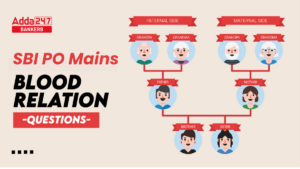Dear Readers,
The reasoning is a game of wits and presence of mind! Yes, it is true and it might seem as the greatest of the challenge after English Section’s surprises but yet this one can easily be dealt with. You just need correct practice and hardwire your brain to quickly make decisions about what to attempt and what to leave. And for same we are providing you questions of Reasoning Question and Answers. Solve these to Practice latest pattern reasoning question for bank exams.
Directions (1-5): Study the following information carefully and answer the question given below:
There are eight persons A, B, C, D, E, F, G and H who have to attend the marriage ceremony in the month of January, February, March and April but not necessarily in the same order. In each month, the marriage ceremony will be on the dates either 7th or 13th of the given month. Only one marriage will be scheduled on these given dates.
A will attend the marriage on 13th of any of the given month but not in January. Only one person will attend the marriage between the dates on which A and H will attend the marriage. Three persons will attend the marriage between the dates on which H and B attend the marriage. Two persons will attend the marriage between the dates on which B and G attend the marriage. One person will attend the marriage between the dates on which C and D attend the marriage. C will attend the marriage ceremony before D. E will not attend the marriage on 13th of any of the given month. There are as many as person will attend the marriage between C and A and as between the A and E.
Q1.Who among following will attend the marriage on 13th April?
(a) D
(b) F
(c) H
(d) G
(e) A
Q2. How many person/s will attend the marriage between A and E?
(a) One
(b) Two
(c) Three
(d) More than three
(e) None of these
Q3. Who among following will attend the marriage on 7th of February?
(a) A
(b) B
(c) C
(d) D
(e) E
Q4. If C is related to B and G is related to H, in the same way E is related to?
(a) B
(b) F
(c) C
(d) D
(e) A
Q5. G will attend the marriage on which of the following dates?
(a) 7th January
(b) 7th February
(c) 13th March
(d) 13th April
(e) None of these
Q6. Point R is 10m north of point A. Point K is exactly in the middle of the points R and A. Point N is 7m east of point A. Point M is 7m east of point K. Point S is 6m north of point M. What is the distance between points S and N?
(a) 3m
(b) 16m
(c) 11m
(d) 12m
(e) None of these
Q7. Point P is 13m towards the East of Point Q. Neha, starts from Point Q, travels 8m towards West and takes a right turn. After taking the right turn, she travels 5m and reaches Point B. From Point B, she takes a right turn again and she travels 21m and reaches Point C. How far and towards which direction must the Neha travel to reach Point P?
(a) 5m towards South
(b) 5 m towards West
(c) 21 m towards South
(d)13 m towards South
(e) None of these
Directions (8-10): Read the following information carefully to answer the questions that follow:
A family consists of six members A, B, C, D, E and F. B is the son of C but C is not the mother of B. A and C are married couple. E is the brother of C. D is the daughter of A and F is the brother of A. G is the father in law of A. B is brother of D. H is grand mother of D.
Q8.Who is the brother-in-law of A?
(a) F
(b) B
(c) E
(d) D
(e) None of these
Q9.Who is the mother of E?
(a) A
(b)H
(c) D
(d) B
(e) None of these
Q10.How is D related to E?
(a) Son
(b) Nephew
(c) Daughter
(d) Niece
(e) None of these
Directions (11-15): Question consists of five statements followed by five conclusions. Consider the given statements to be true even if they seem to be at variance with commonly known facts. Read all the conclusions and then decide which of the given conclusions does not logically follow from the given statements using all statements together.
Q11. Statements: All Pen are Book. Some Book are Pencil. No Pencil are Lesson. Some Lesson are Chapter. All chapter are Pages.
Conclusions:
(a) Some pages are Lesson.
(b) All Pen being pencil is a possibility.
(c) Some Book is not Lesson.
(d) Some Pen is not Lesson.
(e) All Lesson being pages is a possibility.
Q12. Statements: Some Bird are parrot. No parrot is green. All green is yellow. Some yellow is Blue. All Blue is Black.
Conclusions:
(a) All Parrot being yellow is a possibility.
(b) All Bird being green is a possibility.
(c) Some Black is Yellow.
(d) All green being Black is a possibility.
(e) Some bird is not green.
Q13. Statements: Some Key is Lock. Some lock is iron. Some iron is ring. Some ring is round. All round are square.
Conclusions:
(a) All Key being iron is possibility.
(b) All iron being round is a possibility.
(c) Some square is ring.
(d) Some lock being square is a possibility.
(e) Some lock is a ring.
Q14. Statements: All Bird are animal. No Bird is wild. Some wild is pet. All pet is insects. Some insects are lizard.
Conclusions:
(a) Some wild is insects.
(b) All wild being lizard is a possibility.
(c) All pet being lizard is a possibility.
(d) All wild being animal is a possibility.
(e) All animal being wild is a possibility.
Q15. Statements: All Ring is Round. Some Round is Square. Some square is Blue. No Blue is Red. No Red is Yellow.
Conclusions:
(a) All Ring being Blue is a possibility.
(b) All Blue being Yellow is a possibility.
(c) Some Square is not Red.
(d) Some Round is a Blue.
(e) All Ring being Square is a possibility.
You May also like to Read:





 GA Capsule for SBI Clerk Mains 2025, Dow...
GA Capsule for SBI Clerk Mains 2025, Dow...
 The Hindu Review October 2022: Download ...
The Hindu Review October 2022: Download ...
 Important Blood Relation Questions for S...
Important Blood Relation Questions for S...





